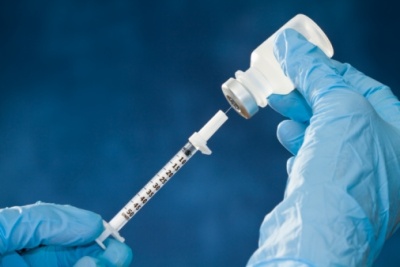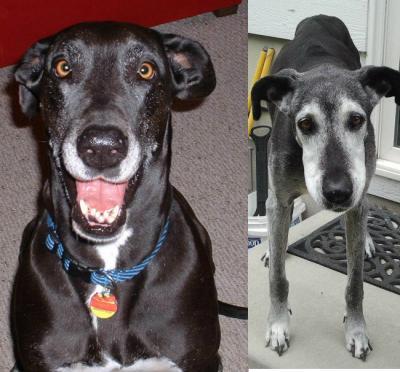By Dr. Kathleen T. Ruddy
On May 31, in New York City, I attended a high-level meeting of members of the Clinton Global Initiative (CGI) gathered to consider how private-public partnerships can best tackle the worldwide challenges of non-communicable diseases (NCDs) like breast cancer, diabetes, and the ever-enlarging holocaust perpetrated by the tobacco industry. Primary prevention of NCDs was our focus; our objective, to give prevention a Birth Of Venus moment.
Prevention, per se, has become the marketing darling at every healthcare event and forum. But truth be told, few participants are truly interested in disease prevention. The majority give it the nod, as they must, but quickly look the other way for they need disease to live in the way that, say, Dracula needs your blood. No, prevention is more like the pretty girl in a flimsy dress – pursued not for the quality of her character but as the means of satisfying every suitor hoping to score.
After listening with interest to the varied opinions and cautionary tales put forth by my colleagues at CGI, I came to realize that we must have as our highest priority this first step: to define and defend primary prevention of disease. To wit: Primary prevention is what we do, or can do, to prevent disease from occurring in the first place. This is not as simple as it looks, for there are many who have taken the definition of disease prevention and retooled it masterfully to further drive diagnosis and treatment of disease, and, thereby, thrive at our expense. Beware!
For the record, mammograms do not prevent breast cancer any more than Pap smears prevent cervical cancer. What prevents cervical cancer is a vaccine like Guardisil that targets the virus that causes cervical cancer, the human papilloma virus (HPV.) As for breast cancer, known and proven risk-reduction strategies exist. They include: regular exercise (30 minutes of moderate exercise, like walking, four times a week), avoiding hormone replacement therapy, oral contraceptives, alcohol, and cigarettes; and maintaining ideal body weight. The scientific data in support of these risk-reduction strategies are sound and convergent, despite those in a position to implement them who remain eerily silent.
As committed as we are to primary prevention of NCDs, we’re banging our pots outside the walls of what looks like an impenetrable fortress. The Race For A Cure and the profit-driven, privately-held healthcare system that runs it, has no more interest in the primary prevention of breast cancer than Caesar had in Brutus’s sword. Look at what is funded under the category ‘breast cancer prevention’ and see for yourself: it’s all about mammogram screening and early diagnosis; well and good if you’ve got the disease, but no use whatsoever if you want to prevent it. Other NCDs fare no better. Diagnosis and treatment are the mortar and bricks of the citadel that everywhere surrounds disease, as if defending it was the best way of defending us. No, we’re going to need bigger pots, and we’re going to have to bang them more loudly if we wish to bring down the walls of this Jericho.
Mind the gap, for there exists a threatening gap that had been widened by theft of the accurate definition of prevention by slickly deployed marketers who intend to keep all races running, indefinitely. Mind you, these are races whose irrational sustainability are bankrupting our healthcare system. There’s no way to provide universal healthcare unless we, its leaders, make primary prevention of disease our priority. For this we must marshall the power of the english language more effectively. Prevention is prevention: everything else is a path to or a form of treatment.
The halo effect of redirecting our efforts towards primary prevention of NCDs like breast cancer is that we could save a fortune. More than a fortune. Approximately $50 billion is spent every year on all things related to breast cancer: diagnosis, treatment, research, marketing, education, and philanthropy. Using known and proven risk-reduction strategies, we could prevent at least 30% of breast cancer, now. Back of the envelope, that’s $15 billion/year saved from our community chest. A preventive vaccine, such as the one developed at the Cleveland Clinic in 2010, has the potential to shave off another $40 billion/year. Do the math and what you come up with is Real Money.
One of the participants at the CGI meeting suggested we should learn from the tobacco industry’s mistakes; that is, how its missteps allowed policymakers to successfully ban smoking from public places, implement age restrictions on sales of tobacco to children, and require warnings to appear on packs of cigarettes. I think we might also want to spend some quality time studying its successes: How, exactly, has an industry which unquestionably poisons everyone on the planet and provides nothing of value to any of us managed to stay in business for so long? How has the tobacco industry played the system so adroitly that it survives victorious, and how can we do that too? Surely, if tobacco can succeed with poison as its product, we can do it with prevention as ours.
Unfortunately, there is no authentic organizational voice for the primary prevention of disease other than the few raised yesterday at CGI. The World Health Organization’s agreement to focus attention on NCDs is worthy, agreed; but the universal good will so radiantly on display is at risk of drowning in a sea of profit-driven diagnosis and treatment unless we plant the flag on the proper definition of primary prevention of disease and vigorously defend it against its foes. Prepare for war, for they are legion.
Lack of research? Lack of data? Lack of evidence, you say? Objections such as these are either diversionary tactics or blind spots. Even a cursory review of the peer-reviewed literature on primary prevention of disease yields myriad ways to effectively drive down the incidence and prevalence of NCDs. That is, if you want to. And we want to. Et tu?
One of the benefits of being a small shop like the Breast Health and Healing Foundation is that you’re more agile when you operate from the periphery. Think for a moment, how fast does the center of the earth spin relative to an island sitting on the equator? Right, the island moves very fast relative to the center, which hardly moves at all. So, don’t look to the federal government or the World Health Organization or the United Nations or any of the industrially infiltrated philanthropies to take the lead on anything but talk as regards primary prevention of disease. If we want disease prevention, then we must work from the periphery where the greatest flexibility exists and where the arc of change moves most rapidly.
Such a space now exists in the private-publc partnerships taking shape at the Clinton Global Initiative, and for that we’re very grateful.
 For decades, the most common treatments against cancer have been chemotherapy, radiation, and surgery. At times, cancer patients may be adequately treated with these procedures and may recover from the disease. Nonetheless, these common regimens often leave cancer survivors with debilitating side effects and many take months or even years to recover from the chemotherapy and radiation.
For decades, the most common treatments against cancer have been chemotherapy, radiation, and surgery. At times, cancer patients may be adequately treated with these procedures and may recover from the disease. Nonetheless, these common regimens often leave cancer survivors with debilitating side effects and many take months or even years to recover from the chemotherapy and radiation.



























